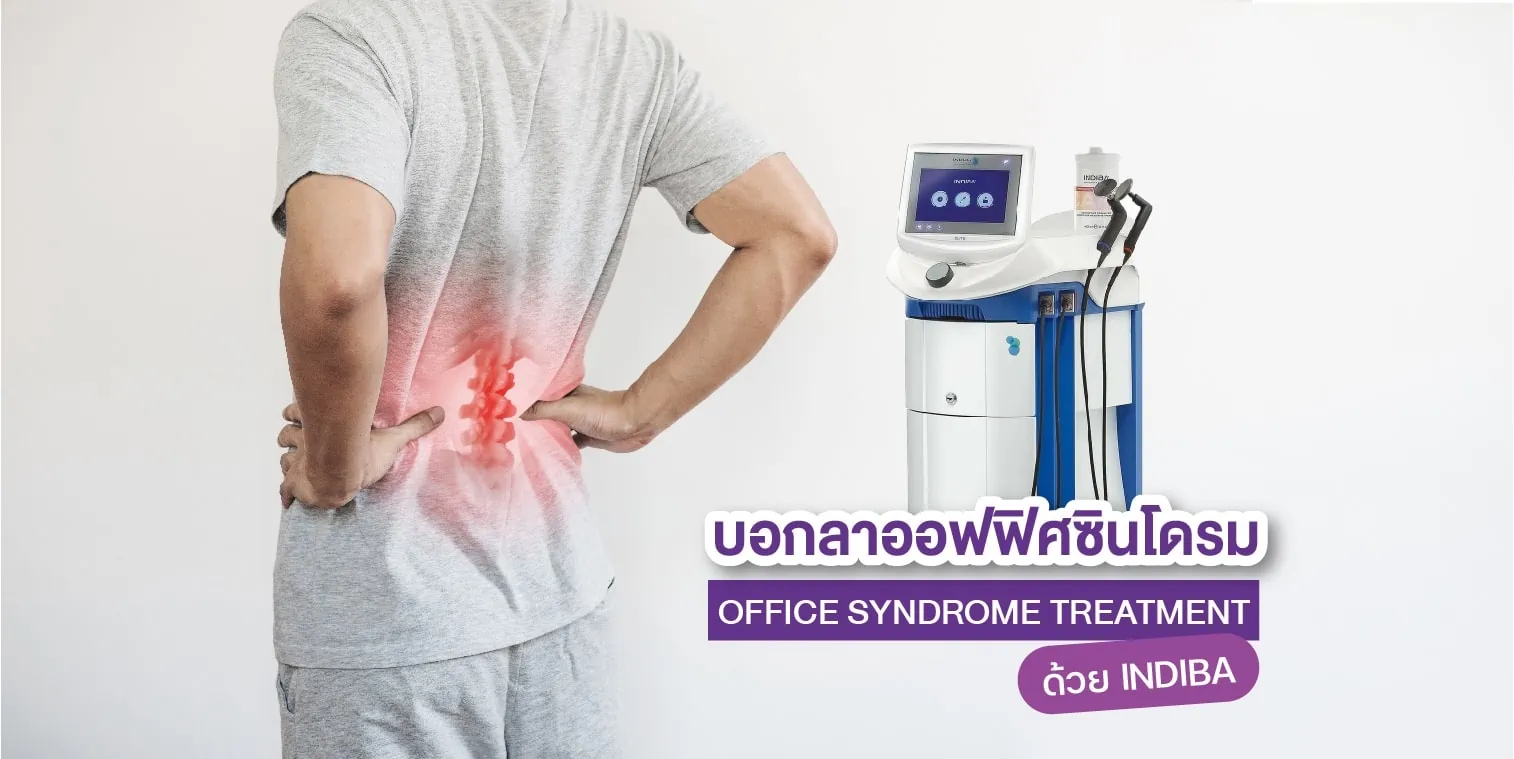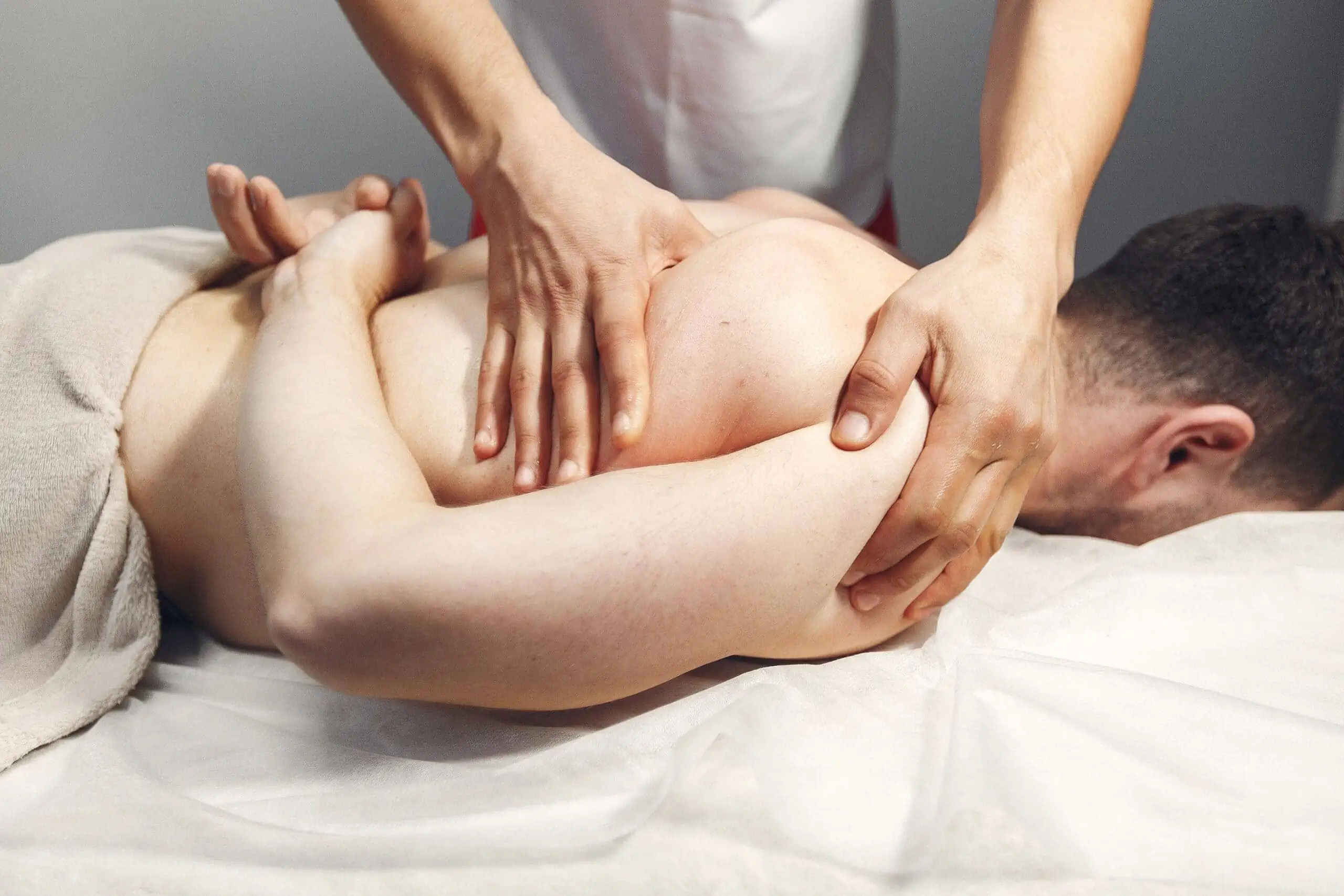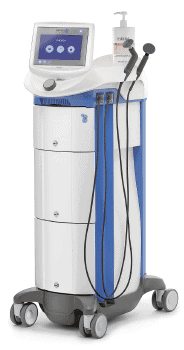

What is Office Syndrome?
Office Syndrome is a common syndrome in office workers who have an inappropriate work environment or have to stay in the same posture for long periods of time. This causes the muscles to become more tense. This results in muscle inflammation, body aches such as back, neck, shoulders, arms, wrists. If you do not modify your behavior, leave this type of pain for a long time. Symptoms can become more serious and include chronic pain, such as using a computer at too high a keyboard level or bending your head to play with your mobile for long periods of time, causing contractions in the muscles of the neck, shoulders and shoulders. If it accumulates for a long time, anguish occurs in the head, which some people may think is a migraine, but is actually caused by a long-accumulated muscle contraction. Using your hands to press the keyboard, click the mouse when you repeatedly push your wrist up and down for a long time, causing inflammation in the tendons around the wrist. Fibrosis thickens over the nerves. It causes numbness in the fingers and wrists, or locked fingers, difficulty moving the fingers, etc., which causes office syndrome can be summarized as follows:
What are the symptoms of Office Syndrome?
1. Muscle and/or membrane fibrosis pain (Myofascial Pain Syndrome)
It is one of the most common pains for office syndrome, with trigger points within each muscle that are caused by repeated muscle contractions or contractions accumulated over a long period of time. When pressed or palpated at the point, a hard webbed lump is found inside the muscle bundle and can cause a feeling of local anguish or anguish to another point of the body. It is more common in the neck, shoulder blades, shoulder blades.
2. Nerves in the wrist are pressed (Carpal Tunnel Syndrome)
This symptom occurs by pressing on the nerves in the wrist, causing tingling, numbness, and pain in the hands, wrists, and fingers. If the symptoms are more severe, the force of squeezing the hand may be reduced due to muscle contractions. Pain increases and cramps are frequent, and if left without treatment early, it can also lead to loss of finger sensation.
3. Trigger Finger
Finger lock syndrome is a condition in which one of the fingers is stuck in a bent position. This causes stiffness and the fingers stumble and may lock when flexing or stretching. If left unattended, you may not be able to bend your finger or help you remove your finger when it locks.
4. Tendinitis
It is an inflammation of the tendon that occurs when a particular area is repeatedly injured. Excessive use of tendons, such as during sports, often occurs in joints such as the knee joints and elbows. Wrists, shoulder blades and other parts of the body
 How to take care of yourself? Not to be Office Syndrome.
How to take care of yourself? Not to be Office Syndrome.
- Change your posture Every half hour. It’s a good 10-minute walk. So that the muscles are not crushed by sitting in one position for a long time.
- Preparing your muscles for strength, such as exercising to strengthen your muscles or stretching in your spare time, will help your muscles relax as well, especially before and after work.
- Get enough rest because too little rest can cause stress to the body and manifest itself with body pain.
Office Syndrome Treatment
- Taking painkillers for muscle cramps, which is considered a late-stage solution and not a sustainable method, can cause other diseases as well.
- A relaxing massage, which is also a solution to the problem at the end of the day.
- Use of electromagnetic stimulation to reduce muscle pain This requires a doctor to diagnose and treat it.
- The use of lasers to help treat muscle pain, which is considered new, can help reduce office syndrome. Using the innovative Proionic Indiba machine, a laser developed to restore muscle at the cellular level.
Indiba program helps relieve Office Syndrome
Indiba’s Proionic innovations have been developed to restore muscle at the stem cell level. With 448 radios, a frequency of 0.5 MHz goes into massage. Relax muscles at points such as shoulders, shoulders, back, and relieve muscle injuries in the shoulders. Shoulders or tendons and bones It can treat either acute injury or chronic pain and also repair the muscles that have the injury. Thus relieving pain in the muscles. From sitting around for long periods of office people very well. The Indiba program operates using 448 radio waves with a frequency of 0.5 MHz cells that massage, relax muscles at points such as shoulders, shoulders, back, and relieve shoulder muscle injuries. Shoulders or tendons and bones Treats either acute injury or chronic pain. The Indiba program uses proionic innovations to revitalize stem cells with 448 KHz radio waves through multiple electrode heads to suit each case. It is safe and can heal and repair muscles with injuries as well.
How good is the Indiba program?
Radio frequency 448 kHz is the optimal frequency level to exchange energy circulating between cells as efficiently as possible. It can heal and restore deep tissues and stimulate stem cells to function at full capacity. Without any side effects, it is a treatment that does not hurt. There are no wounds, and it also solves many problems, such as:
- Heal diabetic wounds faster.
- Reduce pain after chemotherapy (chemo)
- stimulates blood circulation,
- Helps restore various indented flesh in the body.
- Reduces the occurrence of fibrosis after surgery.
- Treatment of keloid lesions
Precautions for treatment with the Indiba program
The Indiba program is a treatment using 448 kHz radio waves that transmit electromagnetic current to the treated point, so it is not suitable for people with electrical defibrillators or electronic devices in the body. Pregnant women Those with venous wounds or blood clots
What can the Indiba program do?
- Helps relieve injuries, aches and inflammation of the muscles.
- Stimulates blood flow, reduces long-term injuries to muscles, bones and joints.
- Repair tissues that have aches or injuries.
- It helps the cells in the body to work efficiently.
- Treatment of chronic pain
- Treats the body at stem cells, making the body recover faster.
The use of lasers to help treat office syndrome is a targeted therapy and helps in the long run. Protecting and keeping yourself healthy from the inside, including keeping your muscles flexible and strong. Eat healthy foods and get plenty of rest. In order not to stress the body until it occurs, it helps prevent office syndrome.
Treating Office Syndrome with Shock Wave Technology
Shock wave therapy is an innovative physical therapy technology used to alleviate chronic pain in various parts of the body. It has gained popularity due to its ability to provide immediate relief from chronic pain symptoms. Shock wave machines have received FDA certification in the United States, ensuring their safety in the treatment process.
What are Shock Waves?
Shock waves are a cutting-edge physical therapy technology that utilizes the physics principles of shock waves generated by compressed air. These shock waves are directed towards tight muscle areas, stimulating the regeneration of damaged tissue. Subsequently, the body undergoes a repair and healing process, leading to a reduction in pain symptoms and increased muscle flexibility. Each session of shock wave therapy typically involves approximately 2,000-3,000 shock wave pulses.
Self-Care After Shock Wave Therapy
After receiving shock wave therapy, some soreness and discomfort in the treated area may occur due to the stimulating effects of the shock waves. This discomfort may persist for 1-2 days, after which the pain and muscle tightness will gradually diminish. To minimize discomfort, it is advisable to avoid strenuous activities or exercises in the treated area for 1-2 days. Gentle stretching is recommended, while massage should be avoided, as it could exacerbate inflammation.
Results and Treatment Duration
For patients with mild or newly emerging pain symptoms, shock wave therapy can yield immediate results. Those with more severe pain may experience a 50% reduction in pain symptoms. It is advisable to space shock wave treatments 5-7 days apart, allowing the body to repair damaged tissues before the next session. Shock wave therapy can also complement other physical therapy treatments, such as ultrasound or laser therapy, to enhance the overall treatment outcome.
The number of sessions required for treatment depends on the severity of the patient’s injury or pain condition, typically ranging from 3-5 sessions.
More Articles
- Get to know Mesenkym stem cells (MSCs) help to restore youthfulness.
- Beautiful skin with vitamin D
- Injection of face filler answer Say good-bye to your old face.
- Vitamin Drip injection, clear skin, white skin, smooth skin, instantaneous
Contact Siam Clinic Phuket
- Contact us at Siam Clinic 1st Floor, Big C Phuket
- map:https://g.page/SiamClinicPhuket
- Telephone : 088-488-6718 and 093-692-5999
- Email :[email protected]
- Facebook inbox :https://m.me/siamclinicthailand
- Instagram :https://www.instagram.com/siamclinic
- Line@ : @siamclinic or addhttps://lin.ee/uny1D7n
- Youtube :Siam Clinic Siam Clinic Phuket Beauty Clinic – YouTube


 How to take care of yourself? Not to be Office Syndrome.
How to take care of yourself? Not to be Office Syndrome.



